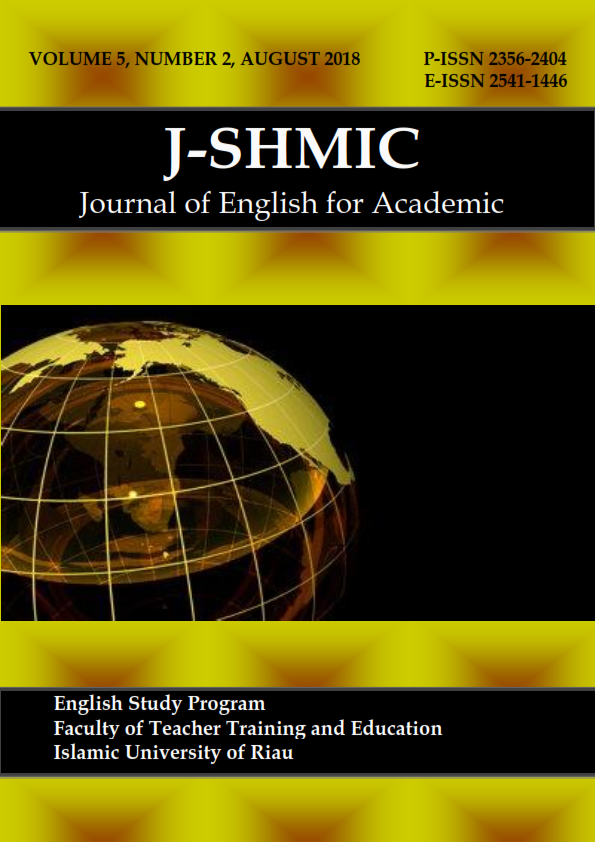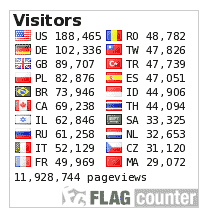Developing Barcorious Application as Teaching Media for English Young Students: Focus on Implication
Keywords:
Barcorious Application, Vocabulary Mastery, English Young StudentsAbstract
Recently, teaching English for young learners especially for elementary school level still becomes problem in practice especially in Pekanbaru. Practically, the teachers teach their students without standard guidance to go with such as curriculum and syllabus because for fourth grades students, English Language subject looks like as extra subject which affects the effort to teach maximal. As response to this issue, the researcher has developed a learning media which focuses on vocabulary mastery which provides chance for the students to learn with or without teacher. There are five stages in developing this media which called by Barcorious such as analyzing students’ need, designing media, developing content and design, implementation media, and evaluation. This study describes the implementation of Barcorious application to enhance students’ vocabulary mastery. Indeed, this media was implemented for teaching four grade students. There was one class which consisted of 35 students participated. The finding shows this media can give significant improvement of students’ vocabulary mastery because the students’ post-test higher than pre-test.
Downloads
References
Ingalls, L. Amy. (2017). Facebook as a Learning-Management System in Developmental Writing. Journal of Developmental Education. Volume 40, Issue 2.
Mtebe, S., Joel. (2015). Learning Management System success: Increasing Learning Management System usage in higher education in sub-Saharan Africa. International Journal of Education and Development using Information and Communication Technology (IJEDICT), 2015, Vol. 11, Issue 2, pp. 51-64.
Sadiman, A.S. 2002. Media Pembelajaran dan Proses Belajar Mengajar, Pengertian Pengembangan dan Pemanfaatannya. Jakarta: Raja Grafindo Persada.
Santrock, J.W. 2002. Life-Span Development(8th edn.). New York: McGraw-Hill.
Saulnier, M, Bruce. (2015). The Flipped Classroom in Systems Analysis & Design: Leveraging Technology to Increase Student Engagement. Information Systems Education Journal (ISEDJ). July, Vol 13 (4).
Schmitt, N. & McCarthy, M. 1997. Vocabulary: Description, acquisition and pedagogy. Cambridge: Cambridge University Press.
Seyal, A. H., & Rahman, N. A. (2007). The Influence Of External Variables On The Executives' Use Of The Internet. Business Process Management Journal,13(2), 263-278.
Suyanto, Kasihani K.E. 2009.English for Young Learners. Jakarta: Bumi Aksara.
Surjono, H. 1995. Pengembangan Computer-Assisted Instruction (CAI) Untuk Pelajaran Elektronika. Jurnal Kependidikan. No. 2 (XXV): 95-106.
Sukiman. 2012. Pengembangan Media Pembelajaran. Yogyakarta: Pedagogia.
Umunnakwe, Ngozi & Sello, Queen. Effective Utilization of ICT in English Language Learning - The Case of University of Botswana Undergraduates. Universal Journal of Educational Research 4(6): 1340-1350, 2016.
MacKenzie, Andrew., Muminovic, Milica., & Oerlemans, Karin. (2017). The Intentional use of Learning Management Systems (LMS) to Improve Outcomes in Studio. JPBLHE: VOL. 5, NO. 1, 2017.
Wang, Qiyun., Woo, Lit, Huay., Quek, Lang, Choon., Yang, Yuqin and Liu, Mei. (2012). Using the Facebook group as a learning management system: An exploratory study. British Journal of Educational Technology. Vol 43 No 3 2012 428–438.
Published
How to Cite
Issue
Section
This is an open-access article distributed under the terms of the Creative Commons Attribution-ShareAlike 4.0 International License which permits unrestricted use, distribution, and reproduction in any medium. Users are allowed to read, download, copy, distribute, search, or link to full-text articles in this journal without asking by giving appropriate credit, providing a link to the license, and indicating if changes were made. All of the remixes, transform, or build upon the material must distribute the contributions under the same license as the original.











